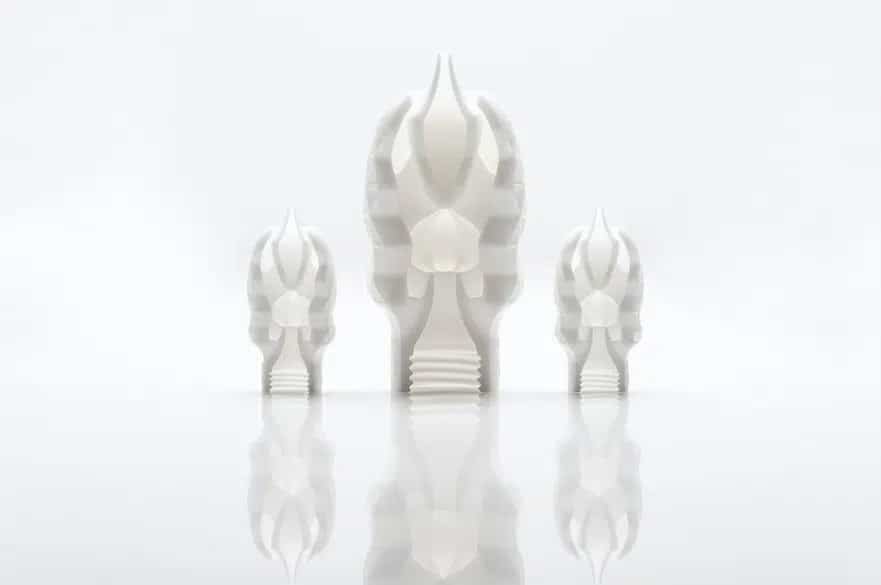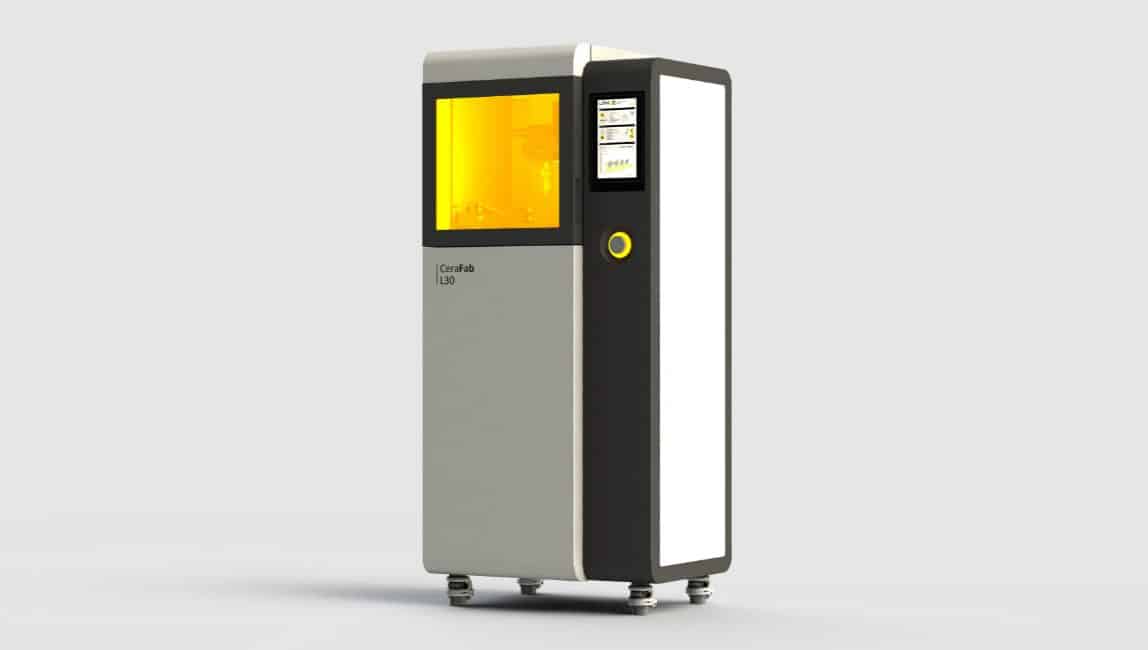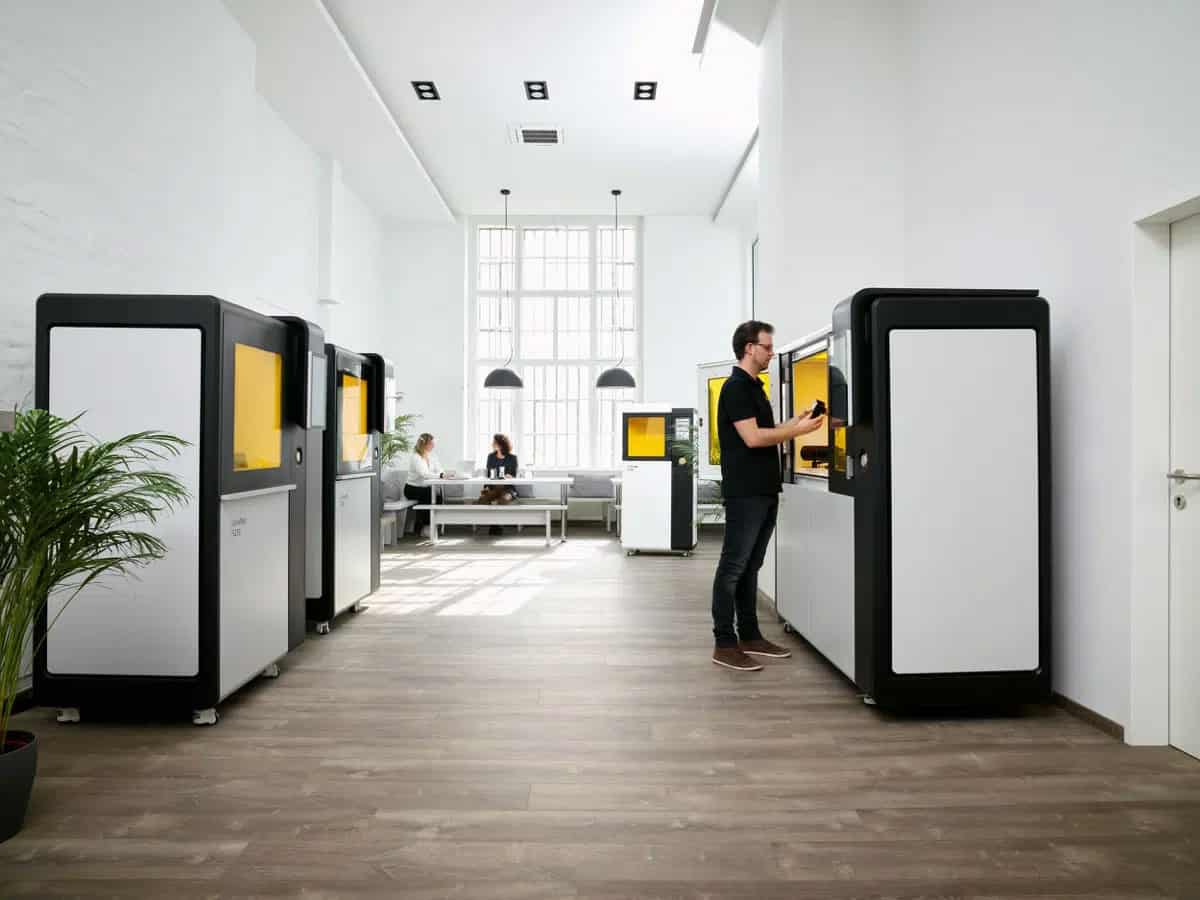Founded in 2011 as a spin-off from the Vienna University of Technology, Lithoz has successfully established itself as a leading global provider of ceramic additive manufacturing. The Austrian company has not achieved this degree of success by resting on its laurels; Lithoz continually strives to innovate in the ceramic AM space, bridging gaps in its portfolio and the broader market. Most recently, the company set out to tackle a hurdle in ceramic AM: the lack of affordable entry-level systems for research labs and material and application developers. Lithoz’s answer to this market blind spot is the new CeraFab Lab L30 ceramic 3D printer.
“Three years ago, we started a new product line: the CeraFab System,” explains Dr. Johannes Benedikt, Lithoz Co-Founder and Chief Technology Officer. “This whole series was developed for serial production and we put all the technologies we had into it: including security features and top-quality parts. In the last two years, however, we found that we needed another type of machine, one that would be tailor made for academia, researchers, material and application developers. In other words, people who want to 3D print ceramics but do not need to start with production machines. This is where the idea for the CeraFab Lab came from.”
Back to the basics
Lithoz’s inspiration for its CeraFab Lab L30 system can actually be traced back to the company’s origins and one of its first product releases. That is, the recently launched entry-level system is based on the CeraFab 7500, Lithoz’s first industrial ceramic 3D printer. This reliable system is characterized by its compact size, user friendliness and freedom for manual adjustments. Notably, it was also the printer that Lithoz used for its initial material development work.
Of course, the CeraFab Lab L30 also draws many benefits from Lithoz’s newer systems, including the CeraFab System series, built for mass production and the manufacture of advanced parts. Together, the CeraFab Lab L30 and CeraFab System series offer a complete solution for entering into ceramic AM, developing applications and materials for the technology and, ultimately, scaling up to serial production.
CeraFab Lab L30 specifications
Like all of Lithoz’s 3D printers, the CeraFab Lab L30 is based on the company’s Lithography-based Ceramic Manufacturing (LCM) technology. This process uses a combination of ceramic-loaded slurry and digital projection to produce green ceramic parts, which undergo debinding and sintering to produce fully dense ceramic parts, which show the same and often superior material properties as in traditional manufacturing methods.
In the LCM printing process, the slurry is dosed and coated on top of a transparent vat. A moveable build platform is then dipped into the ceramic slurry. The layer of material on the build platform is then selectively exposed to an LED light from below the transparent vat, generated by a digital micromirror device (DMD) and projection system. This cures the layer of slurry, and the process is repeated layer by layer until a green part is produced.
As an entry-level ceramic 3D printing solution, the CeraFab Lab L30 strikes a balance between affordable cost and the high quality Lithoz customers can expect from each product. In other words, this 3D printer has an accessible price point for entry-level users — such as research labs and material developers — without compromising on quality. Where does it manage to cut back on cost? Size of build parts and level of automation, primarily.
Concerning the maximal build envelope, the CeraFab Lab L30 offers 76 x 43 x 170 mm. The CeraFab System, by contrast, has build volumes reaching up to 192 x 120 x 320 mm. This compromise in building size not only results in a much more accessible entry price but also in a more compact size of the CeraFab Lab L30. Consequently, this ceramic 3D printer does not only fit much better into limited budgets—it will easily fit onto a shop floor or into a research lab that may not have the space for an industrial, mass production system.
In favor of an even more accessible entry into ceramic 3D printing, the CeraFab Lab L30 does without some automation features of the CeraFab System, such as automatic calibration and an automatic central database for process data. Following customer feedback, it became clear to Lithoz that in their entry model for research and development purposes, these types of features are not typically necessary, because researchers and material developers usually adjust process parameters and print settings manually. For the same reason, the entry-level system also cuts back on serial production features, such as remote control and a computer vision module.
“At the end of the day, every customer can achieve the quality they would expect from a Lithoz machine. The idea is to have a machine with which researchers can work not only on materials but also on applications. When the application is developed, it can be easily scaled using the production system because the optical system, parameters and materials are the same.” – Dr. Johannes Benedikt, CTO, Lithoz
An R&D solution for ceramic AM
The CeraFab Lab L30 was developed specifically for research and development applications, including material and application development. For this reason, the entry-level industrial system is completely open, meaning users can print with any of Lithoz’s existing materials or experiment with any type of ceramic slurry. The idea, as Dr. Benedikt explains, is to give material developers and researchers a low price point access to high-quality technology so they can develop their own materials or applications.
The machine also has the added benefit of low material consumption—a critical feature for material developers. This is enabled by the printer’s upside-down build process which requires as little as 15 ml of slurry to print. Any leftover slurry in the vat can also be easily reused.

It’s not only material developers that can benefit from this: application developers across several industries can more quickly and efficiently iterate ceramic AM parts using the CeraFab Lab L30. When a given part or application is finalized and validated, its production can be scaled using one of Lithoz’s industrial production systems.
Lithoz demonstrated the CeraFab Lab’s capability with the production of an alumina aerospike nozzle for the aerospace industry. The part design was optimized for ceramic additive manufacturing and was 3D printed using the CeraFab Lab L30 and LithaLox 350, a high-purity aluminum oxide with excellent corrosion and temperature resistance. The sample part, measuring 4 cm in height and 2 cm in diameter, showcases the high degree of precision and geometric complexity that the CeraFab Lab L30 is capable of, all without the need for extensive post-processing. Lithoz also specifies that its 3D printer is capable of producing both smaller and larger components, while maintaining the same degree of quality.
While this case study illustrates an application in the aerospace industry, there are many other application areas for the CeraFab Lab L30. Today, Lithoz’s ceramic 3D printing is used for a variety of industrial applications, from semiconductors to machinery, as well as medical and dental applications. The CeraFab Lab can ultimately give application developers the tools to explore applications for ceramic AM beyond the traditional limits.
In addition to R&D and prototyping, the CeraFab Lab L30 is also suitable for small-scale series production. This is thanks to the high-quality printing capability of the 3D printer, which has a variable slice thickness ranging between 25 µm to 100 µm and a lateral resolution as fine as 50 µm—comparable to Lithoz’s production-grade systems.
Overall, by making high-quality ceramic AM as accessible as possible, Lithoz expects greater development of materials and applications, which will in turn lead to greater adoption and use of ceramic 3D printing technologies.




